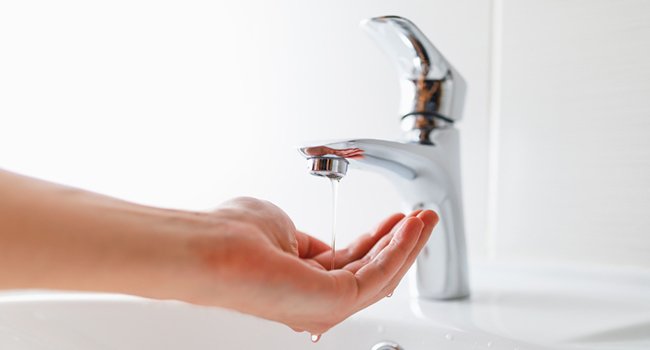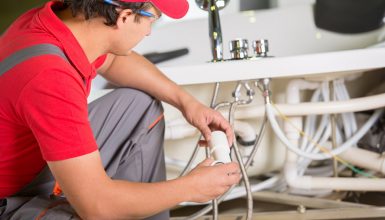What're your ideas regarding 4 Ways to Troubleshoot Low Water Pressure?

Low water stress in your home can be a discouraging problem, impacting everything from showering to washing recipes. If you're experiencing weak water flow, there are several feasible reasons and solutions to explore. In this guide, we'll discuss typical factors for low tide pressure and sensible steps to resolve the issue properly.
Introduction to Low Water Pressure
Low tide pressure occurs when the flow of water from your taps, showers, and various other components is weaker than common. This can make everyday tasks a lot more challenging and less effective. Comprehending the sources of low tide stress is crucial to locating the right option.
Usual Causes of Low Water Stress
Pipeline Obstructions
With time, pipelines can come to be obstructed with mineral deposits, debris, or particles, restricting the circulation of water. This is a typical problem in older homes with galvanized steel pipes.
Rust
Corrosion within pipes can lead to leakages and lowered water pressure. Rust build-up can constrict water circulation, especially in maturing plumbing systems.
Faulty Pressure Regulatory Authorities
Stress regulators are responsible for keeping consistent water stress in your house. If they malfunction, it can result in low tide pressure or irregular flow throughout the house.
Metropolitan Water Supply Issues
In some cases, the problem lies outside your home. Municipal water problems, such as main line leaks or upkeep work, can momentarily reduce water stress in your location.
Exactly How to Detect Low Water Pressure
Inspecting Taps and Components
Begin by examining the water stress at various taps and fixtures throughout your home. If the problem is separated to particular locations, it might indicate localized issues.
Inspecting Pipes
Check noticeable pipes for indications of leakages, corrosion, or blockages. Focus on any unusual audios, such as knocking or rattling pipes, which could suggest problems within the plumbing system.
Consulting with a Plumber
If you're incapable to pinpoint the reason for low tide stress, consider employing an expert plumber to carry out a comprehensive assessment. They can recognize underlying concerns and advise appropriate services.
DIY Solutions to Take Care Of Low Tide Stress
Cleaning Up Aerators and Showerheads
Mineral deposits can accumulate in aerators and showerheads, lowering water circulation. Remove and clean up these components routinely to improve water pressure.
Flushing Water Heater
Debris accumulation in the water heater can limit circulation and decrease performance. Flushing the storage tank periodically helps get rid of sediment and keep optimal efficiency.
Checking Stress Regulatory Authority
Make sure that the stress regulator is operating appropriately. Adjusting or changing the regulator can aid restore correct water stress throughout your home.
Clearing Clogs in Water Lines
For minor clogs, try using a plumbing snake or chemical drainpipe cleaner to clear obstructions in pipelines. Beware when making use of chemicals and follow safety and security standards.
When to Call a Specialist Plumber
If do it yourself initiatives fail to deal with the concern or if you believe substantial plumbing problems, it's ideal to seek aid from a licensed plumber. They have the proficiency and devices to deal with intricate problems securely and efficiently.
Safety Nets to Keep Water Pressure
Normal Maintenance
Arrange regular maintenance for your plumbing system to stop problems such as deterioration, leakages, and blockages. Attending to minor issues early can aid prevent even more significant repair services in the future.
Mounting a Pressure Booster
Think about mounting a stress booster pump to boost water pressure in areas with continually reduced flow. This can be especially advantageous for multi-story homes or residential or commercial properties with high-demand fixtures.
Monitoring Water Use
Be mindful of water usage practices and stay clear of ill-using the plumbing system. Basic changes, such as shocking showers and laundry lots, can aid maintain ample water stress.
Conclusion
Handling low water pressure can be aggravating, however identifying the underlying causes and implementing appropriate solutions can restore optimum flow throughout your home. Whether it's cleaning aerators, checking pipes, or seeking advice from a plumber, taking aggressive steps can make sure a consistent supply of water for your daily needs.
How to Fix Low Water Pressure In Your Home
Municipal Water Supply Issues
Scheduled maintenance, high demand, and water main breaks are all potential causes for low water pressure within a city or county’s water lines. While there’s not much you can do to personally fix a problem with your city or county’s water supply system, you can play a big role in documenting the issue and alerting those who can.
How to fix it:
- Ask your neighbors if they are experiencing any issues with low water pressure. If multiple homes are affected, it’s likely related to the city’s water line.
- Contact the local Water Authority to see if there is any maintenance taking place that might be affecting your supply. Also let them know of your specific issues. If other homeowners report the same issues, they’ll know that there could be a larger issue to look into.
Faulty Fixtures
A damaged or clogged shower head, faucet or appliance is the first thing we’d suggest checking, especially if low water pressure appears to be isolated to a specific area of your home.
How to fix it:
- First, turn off the main water supply to your home.
- Check the affected appliances for build-up or debris. In the case of a faucet, you can simply unscrew the aerator at the tip of the faucet. Showerheads should be fully detached from the water pipe.
- While the appliances are detached, you may want to check the water supply to determine if the fixtures were in fact the issue.
- To clean, soak the showerhead or aerator in vinegar and brush off any visible debris.
- Reattach the fixtures and check the water pressure again. If it is still low, there is likely a deeper issue at hand, which can be determined by a professional plumber.
Pipe Obstructions
Mineral deposits, rust or other debris within water pipes can lead to blockages or corrosion over time.
How to fix it:
When you think of a clog, you probably think of a drain clog. While there are many DIY solutions to clearing a drain, clogs in a water pipe will almost always require the help of a professional plumber. A plumber will be able to locate the affected pipe and clean out any debris or mineral deposit buildup. In severe cases, the pipe may need to be replaced. Your plumber might also recommend a water softening system to remove the minerals from your home’s water supply that can contribute to pipe blockages over time.
Plumbing Leak
Undetected water line leaks can divert water away from your residential pipes, reducing the water pressure in your fixtures.
How to fix it:
- Check your water meter by turning off all water sources and monitoring the meter for any movement, which could be a clear indicator of a potential leak.
- Check all visible pipes for signs of leaking, including water stains, active dripping or damp spots around the pipe.
- Inspect fixtures, including faucets and showerheads, for any drips.
- Test the pressure but recording the pressure with the main water valve shut off. Leave off for a few hours and test again. A significant drop in pressure is a clear sign of a leak.
https://kiddcoplumbing.com/plumbing-blog/how-to-fix-low-water-pressure/

As a reader about , I thought sharing that portion was essential. Do you know about another person who is looking into the subject? Please feel free to share it. Thanks a bunch for being here. Revisit us soon.
Click Here
Comments on “Leading Approaches for Resolving Low Water Pressure in Your Home”